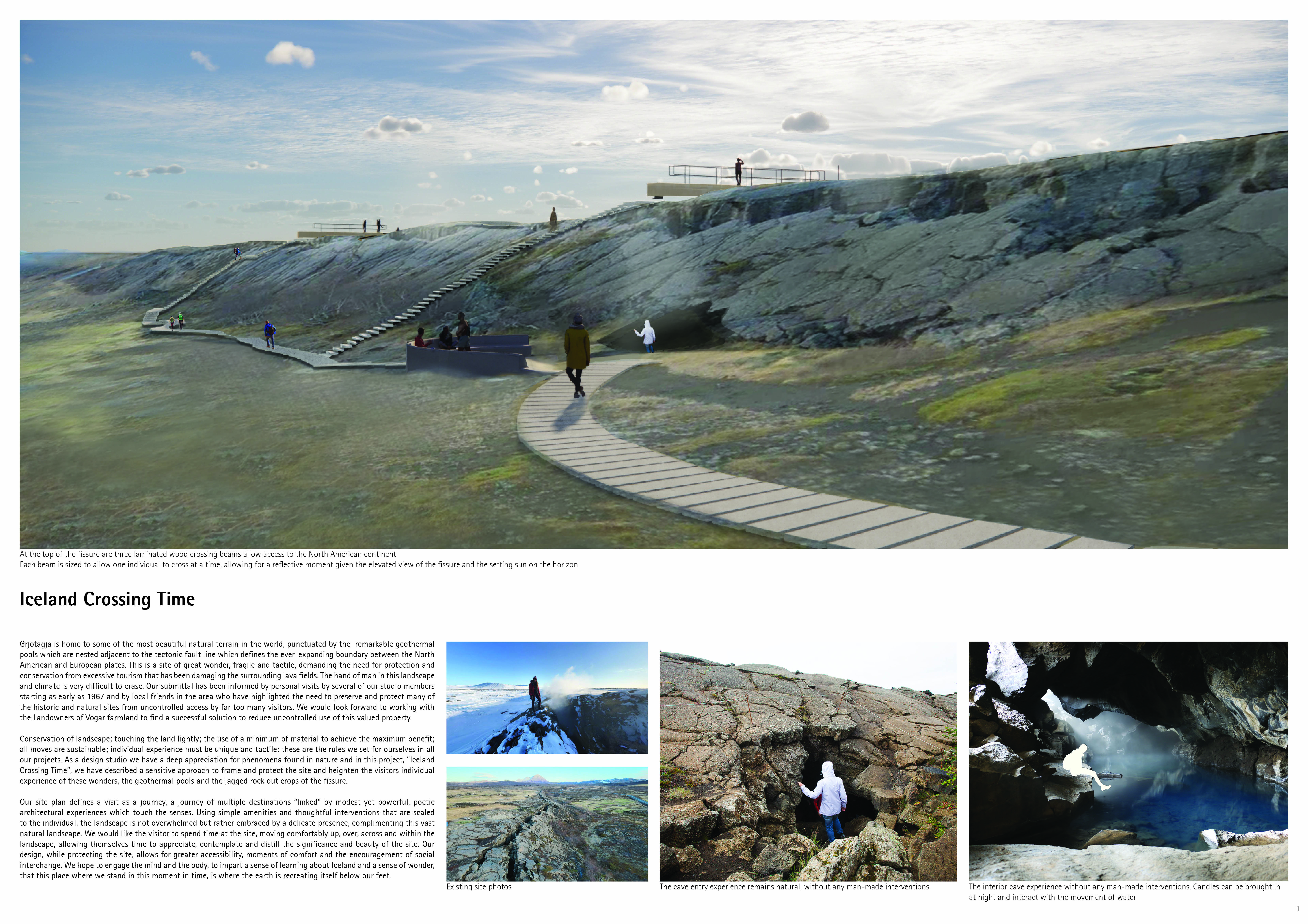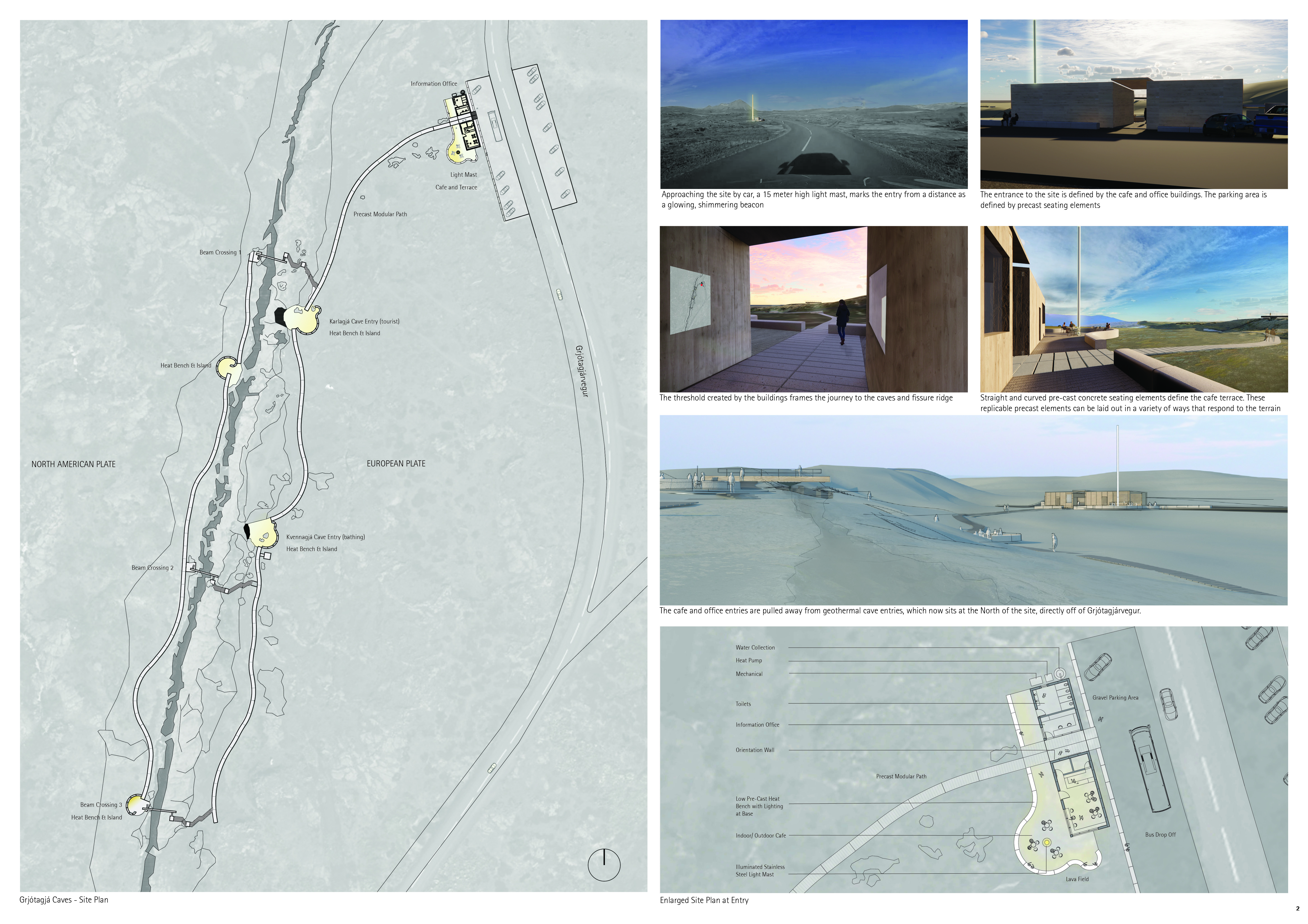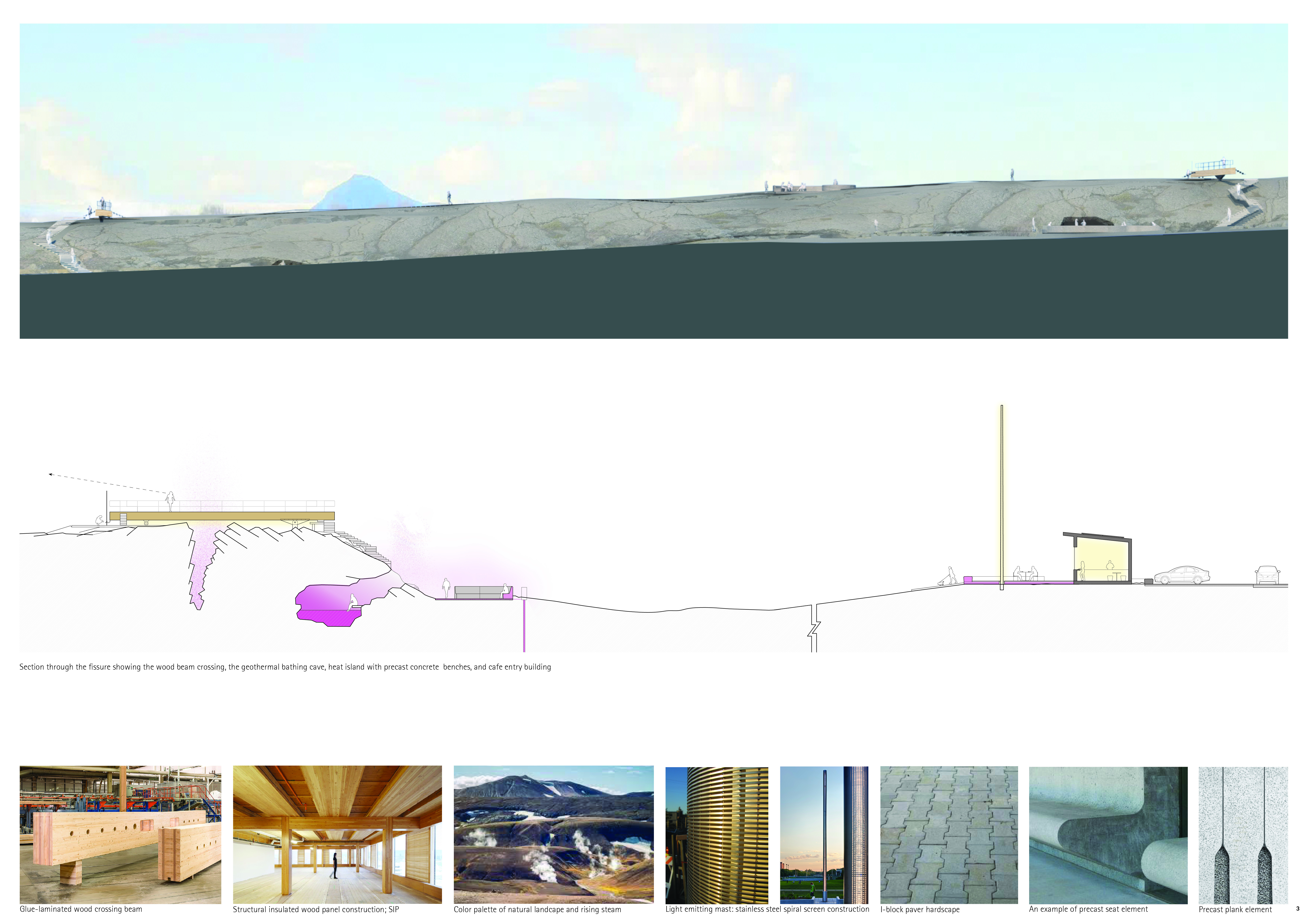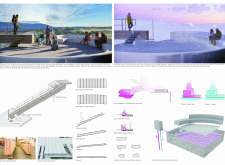5 key facts about this project
The design of “Iceland Crossing Time” is situated in Grjotagja, Iceland, a region known for its geothermal pools and geological features. The overall concept focuses on improving visitor experiences while safeguarding the sensitive environment. The layout harmonizes with the site's natural charm, allowing for a thoughtful exploration of the volcanic landscape.
Access and Elevation
Three laminated wood crossing beams provide essential access to the boundary of the North American continent. These beams serve as both passageways and vantage points. Visitors gain elevated views of the fissure and its surroundings, prompting moments of introspection as they take in the expansive landscape.
Spatial Experience
The layout is organized as a journey, inviting visitors to discover multiple destinations within the site. This approach encourages deeper engagement with the geological elements that make Grjotagja unique. Careful navigation through the space allows individuals to appreciate the fragile beauty of the landscape while minimizing environmental impact.
Materials and Construction
Two materials are prominently used: laminated wood for the crossing beams and precast concrete for seating elements in the parking area. The choice of materials reflects a commitment to sustainability, ensuring that structures blend with the natural environment. The wooden crossings are designed to resonate with the landscape, while the concrete elements clearly define functional areas without overwhelming the scenery.
Experience of the Site
Walking along the beams creates an experience that highlights geological processes at work. Visitors are reminded of the tectonic movements that shaped the region. Engraved time stamps on hardscaping help educate the public about the geological history of Iceland. Thoughtful lighting designs enhance the interaction between natural and built elements during evening visits, adding a subtle layer to the overall experience.






















































